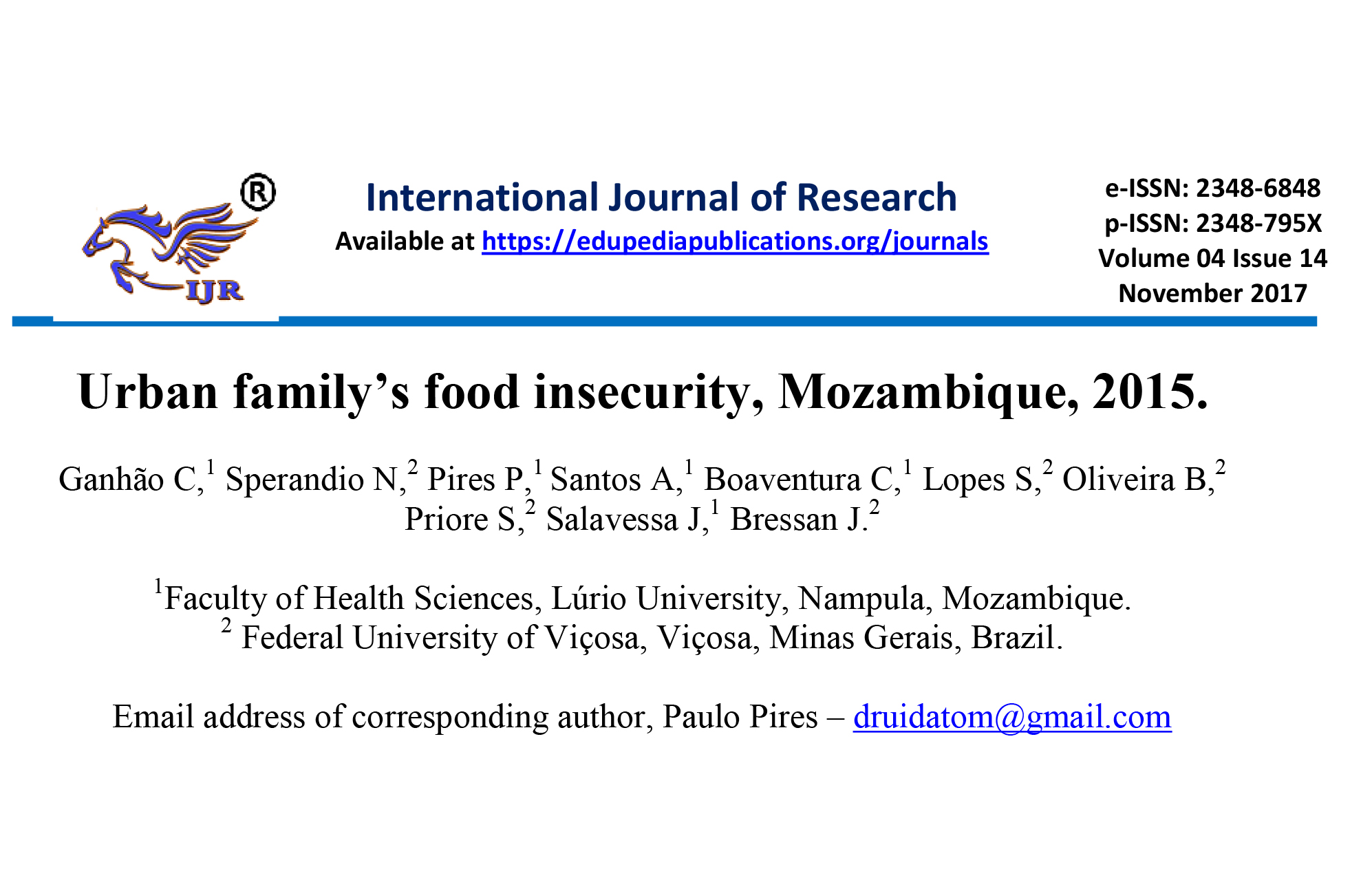Urban family’s food insecurity, Mozambique, 2015

Ganhão C,1 Sperandio N,2 Pires P,1 Santos A,1 Boaventura C,1 Lopes S,2 Oliveira B,2
Priore S,2 Salavessa J,1 Bressan J.2
1Faculty of Health Sciences, Lúrio University, Nampula, Mozambique.
2 Federal University of Viçosa, Viçosa, Minas Gerais, Brazil.
ABSTRACT
Context: Nampula is the third largest city in Mozambique, under a strong rural – urban migration. Here is Mutauanha neighbourhood, highly populated with several weak urban, demographic and social factors associated with food insecurity. Surrounding Lúrio University Health Sciences Faculty facilities, made it eligible to develop a research and health education program, "One student, one family". Its main objective is students’ interaction with local communities, providing close and continuous contact throughout the students' training process, with the community’s daily problems, following 350 families. In Mozambique, there is not a validated method to assess food insecurity, but international methods can be adapted successfully to evaluate food insecurity, allowing an accurate assessment (prevalence and determinants) in urban families living in Nampula..
Methods: descriptive, cross-sectional study with informed consent of 103 families, followed by undergraduate students in 3rd year Nutrition Course, duly guided and accompanied. We applied the American Food Security Scale to determine food insecurity and a structured interview about social and economic information. To evaluate food insecurity determinants, Chi-square tests were used for categorical and Pearson correlation for numerical variables. A significance level of 5 % was adopted.
Results: food insecurity attains 65 % of families in Nampula city. Average families’ monthly income per capita was 697.52 Meticais (± 10 US$, 0,33 US$ / day). Children under five years of age low weight, chronic undernutrition and overweight prevalence were 5.2 %, 24.2 % and 20.7 % respectively.
Discussion: food security was associated with domestic food production (p < 0.05) and use of treated water for food preparation (p < 0.05). Correlation test regarding numerical variables showed that the lower the yield, the greater the food insecurity (r = - 2.92; 0.01). The most important determinant of food insecurity was low household income per capita.
Conclusion: we demonstrate a high prevalence of food insecurity among urban families in Nampula, Mozambique. Low family income may be the main barrier to access adequate food.
Key words: family, food insecurity, hunger, nutrition, poverty, undernutrition, urban.
 Português
Português
 English
English 

